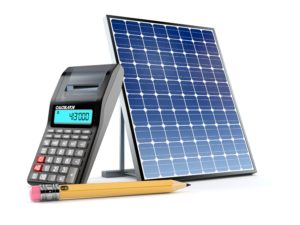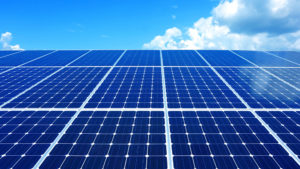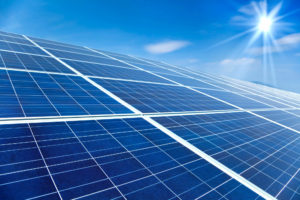Summers can be a pretty tormenting season. While the sunshine and beaches might be a plus, the extremely high temperatures are certainly tough to deal with.
Although air conditioning is a total bliss in such weather conditions, we cannot deny that it is a bit pricey. Switching to solar energy allows you to enjoy the benefits of an air conditioner without paying through the nose.
Solar power costs much lesser than electricity. It enables you to blast your air conditioner all summer without worrying too much about the money you’re spending.
Wondering how many solar panels you need to power your air conditioner? Fret not, for we have done the research on your part and collated everything you need to know about using solar panels for air conditioners.
Contents
- 1 Key Takeaways
- 2 Types Of Solar Powered Air Conditioners
- 3 How To Determine The Number Of Solar Panels Required To Power An Air Conditioner
- 4 Can You Install Air Conditioners After Installing A Solar Panel?
- 5 What Factors Determine The Power Consumption Of An Air Conditioner?
- 6 How Many Solar Panels Are Required To Run An RV Air Conditioner?
- 7 Are Solar-Powered Air Conditioners Effective?
- 8 What Are The Advantages Of Solar-Powered Air Conditioners?
- 9 Case Study: Efficient Solar Solutions for Air Conditioning
- 10 Expert Insights From Our Solar Panel Installers About How Many Solar Panels to Run an Air Conditioner
- 11 Experience Solar Excellence with Us!
- 12 Wrapping Up
Key Takeaways
- There are three types of solar-powered air conditioners: DC, AC, and hybrid, each with its advantages and limitations.
- To determine the number of solar panels required to power an air conditioner, you need to calculate the AC’s power consumption and then divide it by the expected energy production of your solar panel system.
- Adding an air conditioner to an existing solar panel system may require additional panels if your electricity consumption increases significantly. Factors influencing AC power consumption include outside temperature, the number of electrical appliances, windows, location, and the number of people in the room.
Types Of Solar Powered Air Conditioners
Broadly, there are three types of solar-powered air conditioners.
DC Solar Air Conditioners
DC solar air conditioners are easy to maintain. You can connect them directly to the panels without any conversion.
However, the DC air conditioners require batteries and an inverter in the absence of sunlight. Off the grid, they are not the best option, especially during the dark.
AC Solar Air Conditioners
These air conditioners are also known as inverter ACs since they need an inverter to convert DC to AC energy. If you wish to store excess energy, you can even add batteries to this plan.
Moreover, you can power the AC with grid electricity on days with little or no sunshine. The best part about inverter ACs is that they are cheaper than most DC models.
Hybrid Solar Air Conditioners
In the case of hybrid solar air conditioners, you can service power from the sun during the daylight and an inverter at night. These models do not even require batteries.
However, you cannot reap the benefits of net metering with hybrid solar air conditioners.
How To Determine The Number Of Solar Panels Required To Power An Air Conditioner
Before you calculate the number of solar panels required, you need to determine the power consumption of an air conditioner.
You can do it manually or with the help of a Kill A Watt meter.
Calculating Power Consumption Manually
Air conditioners can come in different cooling capacities: 1 ton, 1.5 tons, 2 tons, or 3 tons.
Let us consider a 1-ton air conditioner, for example. Typically, such an AC will use anywhere between 991 watts and 1333 watts. Hence, the monthly energy consumption of a 1-ton AC is between 92 kWh to 122 kWh.
Some air conditioners come with an energy-saving label that you can use to calculate power consumption.

Calculating Power Consumption Using A Kill A Watt Meter
Using a Kill A Watt meter will give you readings of any appliance’s power consumption. You only need to plug your AC wire into the meter and connect the meter to a wall socket.
Once you start using the air conditioner, study the meter for about a week and observe the results. When the week ends, note down the final value.
After you determine the power consumption of the AC, you can move on to calculating the number of panels required.
Calculating The Number Of Panels Required
Let us again consider a 1-ton AC. If you install a central air conditioner, it will use between 3 kW and 5kW of electricity. Therefore, your solar panels should generate at least enough power to match this demand.
Essentially, you need to divide the energy consumption amount by the average energy a solar unit is expected to produce.
Production Ratio
A production ratio indicates the amount of energy a solar panel system will likely produce in relation to its size. This ratio is specific to each panel design and property.
Here are a few estimates of the production ratio in different regions of America.
| Region | Production Ratio Range |
|---|---|
| Southwest | 1.5 - 1.8 |
| West Coast | 1.4 - 1.8 |
| Mountain West | 1.3 - 1.6 |
| Southeast | 1.2 - 1.5 |
| Mid-Atlantic | 1.1 - 1.35 |
| Midwest | 1.1 - 1.3 |
| Northeast | 1 - 1.3 |
| Pacific Northwest | 1 - 1.15 |
You can calculate the number of watts you require by dividing the anticipated energy required by the production ratio.
For example, your AC uses 5000 kWh of energy yearly, and the production ratio in your region is 1.6. Your energy requirement will therefore be equal to 5000 kWh/1.6, which is 3125 kWh.
Now, to calculate the number of panels required, find out the number of watts in your solar panel. Divide the energy requirement of the air conditioner by the watts per panel to obtain the total number of panels you need.
Continuing the example above, let us assume your solar panel has 350 watts of energy. Therefore, the number of panels you need is equal to 3125 kWh/ 350 W, which is 9.
Can You Install Air Conditioners After Installing A Solar Panel?
If your home is already solar-powered, it doesn’t mean that you can’t add an air conditioner.
You need to keep in mind that by installing an AC, your electricity consumption will increase by a great degree. So, your existing solar panel system may not be able to supply the required amount of energy.
Most likely, you will have to add a few more solar panels to meet the additional energy requirement. As long as you have room on your roof to accommodate more panels, you’re good to go.
In case the roof lacks the capacity for more units, you can schedule an energy audit. The audit will help you identify areas where you can improve energy efficiency, thereby decreasing baseline consumption.
If you can decrease your electricity consumption in other areas to offset the additional energy requirement, you can install a new air conditioner.

What Factors Determine The Power Consumption Of An Air Conditioner?
Several factors can influence how much energy your air conditioner uses. Here are a few crucial considerations.
Outside Temperature
When the temperature is high, the AC will use more power to cool the room than on days when the temperature is relatively lower.
Number Of Electrical Appliances
If your room has many electrical appliances, the air conditioner will have to work harder to cool the room, resulting in increased power consumption. However, in a room with only a few electrical appliances, lesser energy is required.
Number Of Windows
Since windows drive air in and out of your house, they influence your air conditioning requirements.
In summers, windows bring in breezes that cool your house down. However, they also bring in the heat when there’s no breeze, increasing your need for air conditioning.
Location
If you live in a state like Colorado, there are more cooling degree days. Therefore, there is a higher demand for air conditioning, as compared to states like Texas.
Moreover, if your house is covered by trees or any other form of shade, your AC requirements will be lower than that of a house exposed to sunlight.
Number Of People In The Room
The number of people within the air conditioning space matters because people emit heat. As a result, more ACs or a bigger AC is required in a room with more people.
However, a regular AC can get the job done in a room with just a few people.
How Many Solar Panels Are Required To Run An RV Air Conditioner?
It is possible to run an RV air conditioner on solar energy and batteries.
A standard RV air conditioning unit demands too much energy; around 3500 watts of power to start and another 1500 watts to continue running.
RV grade solar panels are typically 12-volt panels. You will require at least 1800 watts of solar panels to run an air conditioner, assuming you have battery power as well. Ideally, it would be best if you carried a battery bank of 800 amp-hours.

Are Solar-Powered Air Conditioners Effective?
People often doubt whether a solar-powered air conditioning system will be as effective as the conventional one.
As long as your roof receives plenty of sunlight, the air conditioner will work just as it would using an electric-powered system.
If you need to use your solar-powered air conditioner on days with scanty sunlight, most systems have a battery array for such situations. The extra energy collected by the panels on hot days gets stored in these batteries.
What Are The Advantages Of Solar-Powered Air Conditioners?
In case you’re still wondering whether you should switch to a solar-powered air conditioner or not, consider the many benefits you will derive from it.
Clean Energy
Solar energy is the cleanest form of energy available for use today. If you wish to embrace a clean and green lifestyle and do your bit for the environment, you should use solar energy.
By going off the electricity grid, you will detach yourself from a system that burns excessive carbon and causes greenhouse emissions.
Installing a solar-powered air conditioner will reduce the carbon footprint of your property and conserve the environment.
Low Maintenance
While installing a solar-powered air conditioner may be a bit of a hassle, there are minimal maintenance costs.
More often than not, the appliance will work seamlessly, and you won’t have to seek technicians all the time.
Reduced Utility Cost
The purchase and installation of a solar-powered air conditioning unit might be expensive, but you’ll make major savings in the long run.
By reducing your dependency on the electrical grid and harnessing solar energy, your home maintenance costs will reduce.
Case Study: Efficient Solar Solutions for Air Conditioning
Background
At Solar Panels Network USA, we frequently encounter clients who are interested in leveraging solar power to run their air conditioning systems. One of our recent projects involved a residential property looking to reduce its dependency on grid electricity by switching to a solar-powered air conditioning solution.
Project Overview
The client’s home, situated in a sunny region with ample roof space, provided an ideal setting for a solar installation. They had a central air conditioning unit with a cooling capacity of 1.5 tons. The primary goal was to ensure that the air conditioner could run efficiently on solar power during peak summer months without causing a significant spike in electricity costs.
Implementation
Our first step was to conduct an energy audit to understand the home’s power consumption patterns. Using a Kill A Watt meter, we measured the AC’s energy usage over a week, noting an average consumption of 1,150 watts per hour.
Next, we calculated the total energy requirement. Given the average sunshine in the region and the AC’s usage, we determined that a solar system capable of producing around 1,500 kWh annually would suffice. With a production ratio of 1.6, this translated to a system size of approximately 937.5 kWh.
We recommended and installed a hybrid solar air conditioning system. This setup included:
- 10 high-efficiency 350-watt solar panels
- An inverter to convert DC to AC energy
- Batteries to store excess energy for nighttime use
Results
Post-installation, the system performed exceptionally well. During the day, the solar panels generated enough power to run the air conditioner continuously. The inverter seamlessly switched to battery power at night, ensuring uninterrupted cooling. The client reported a significant reduction in their electricity bills, attributing the savings to the efficient solar setup.
Additionally, the hybrid system provided flexibility during overcast days, where the inverter would draw minimal power from the grid, further optimizing energy use.
Summary
This project highlights the effectiveness of hybrid solar air conditioning systems. By accurately calculating energy needs and implementing a tailored solar solution, we were able to provide our client with a cost-effective and environmentally friendly cooling option. Solar Panels Network USA remains committed to delivering customized solar solutions that meet our clients’ unique needs, promoting sustainable energy use across the country.
Expert Insights From Our Solar Panel Installers About How Many Solar Panels to Run an Air Conditioner
Installing solar panels to power your air conditioner not only reduces your carbon footprint but also significantly cuts down on your energy costs. Our clients often see a return on investment within a few years due to the savings on their electricity bills.
Senior Solar Technician
Understanding the power consumption of your air conditioner is crucial. A 1-ton AC typically uses between 991 and 1333 watts. By calculating your AC’s power consumption, we can determine the exact number of solar panels required, ensuring efficiency and cost-effectiveness.
Lead Solar Installer
Hybrid solar air conditioners offer the best of both worlds. They utilize solar power during the day and switch to grid power or an inverter at night. This flexibility ensures that you have consistent cooling without relying entirely on solar energy.
Chief Solar Engineer
Experience Solar Excellence with Us!
Trust in Solar Panels Network USA, where our seasoned experts deliver top-quality solar solutions for homes and businesses nationwide. With a legacy of countless successful installations and a commitment to sustainable energy, we’re your reliable partner in the solar journey. Ready for a brighter, eco-friendly future? Call us now at (855) 427-0058 and harness the power of the sun!
Wrapping Up
Air conditioners require a lot of power and increase your utility bill by a huge amount. However, switching to a solar-powered air conditioner lets you cool the room without burning a hole in your pocket.
If you wish to switch to such ACs, you need to determine how much power your air conditioner will require and accordingly calculate how many solar panels you need.
There’s no straight answer for the number of panels required. It depends on many factors, such as your region, size of the AC, and much more.
You can reach out to your solar provider to get a better assessment of your existing solar plan and the addition of an air conditioner.
About the Author
Solar Panels Network USA stands at the forefront of solar energy solutions, driven by a team of seasoned solar engineers and energy consultants. With over decades of experience in delivering high-quality solar installations and maintenance, we are committed to promoting sustainable energy through customer-centric, tailored solutions. Our articles reflect this commitment, crafted collaboratively by experts to provide accurate, up-to-date insights into solar technology, ensuring our readers are well-informed and empowered in their solar energy decisions.

